Ceramic ornaments add charm and character to any space, but their delicate nature means they are prone to breakage. When accidents happen, it can be disheartening to see your cherished pieces in pieces. Fortunately, with the right tools and a little patience, it is possible to restore your broken ceramic ornament to its former glory. This guide will walk you through the process step-by-step ofhow to fix a broken ceramic ornament, ensuring that your repair is both effective and aesthetically pleasing, preserving the beauty of your treasured item.
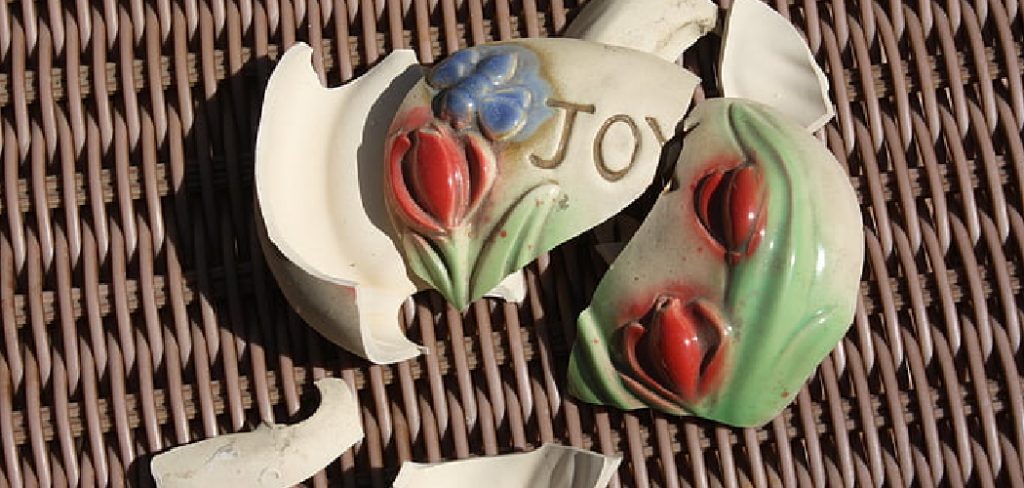
Understanding Ceramic Ornaments
Ceramic ornaments are crafted from clay and transformed through a process of shaping, glazing, and firing at high temperatures. This method gives them their distinct characteristics of strength, durability, and beauty. Generally, these ornaments are glazed to produce a smooth, often colorful surface that enhances their visual appeal.
They can range from intricately detailed figurines to simple decorative tiles. Due to their composition, ceramics are both hard and fragile, making them susceptible to chipping, cracking, or breaking, especially upon impact. Understanding the delicate balance of their robust yet brittle nature is essential when handling, displaying, and repairing these ornamental items. By appreciating these features, you gain insights into the best practices for maintaining their integrity and aesthetic value.
Common Causes of Breakage
Ceramic ornaments, while beautiful, can be surprisingly fragile, and several factors contribute to their breakage. One of the most common causes is accidental dropping or knocking over an ornament, which can easily occur if the item is displayed in a high-traffic area or on an unstable surface. Temperature fluctuations can also lead to cracks or breakage; ceramics may expand and contract with changes in temperature, potentially leading to stress fractures over time.
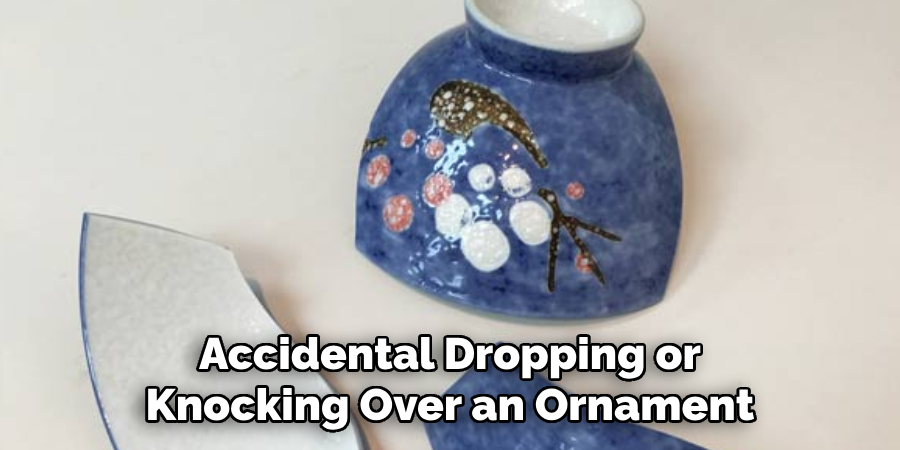
Additionally, improper handling when moving or cleaning can exert pressure on delicate parts of the ornament, increasing the risk of damage. Finally, certain glazes or finishes may be more prone to wear and tear, particularly if the ornament is exposed to direct sunlight or is in a humid environment, which can weaken the material and lead to deterioration. Understanding these common causes of breakage can help prevent accidents and prolong the life of your ceramic ornaments.
Tools and Materials Needed
To successfully repair a broken ceramic ornament, gathering the right tools and materials is crucial. Here’s a list to get you started:
- Epoxy Adhesive: A strong, clear-drying epoxy is essential for bonding the broken pieces securely. Ensure it is suitable for ceramic and follow the manufacturer’s instructions for mixing and application.
- Paintbrush or Toothpick: These can be used to apply the adhesive precisely to small or intricate areas, ensuring a clean and accurate repair.
- Sandpaper: Fine-grit sandpaper is useful for smoothing any rough edges on the broken pieces, which will help the adhesive bond more effectively.
- Cleaning Cloth or Rag: It’s important to clean both the pieces and your hands thoroughly to remove any dust or oils before applying the adhesive.
- Clamp or Tape: To hold the pieces together while the adhesive sets, use a clamp or masking tape. Be gentle to avoid further damage.
- Touch-up Paints: If necessary, have some matching acrylic or ceramic paints on hand to touch up any visible repair lines and restore the ornament’s original appearance.
- Small Brush or Sponge: Use these tools for applying touch-up paints accurately and evenly for a seamless finish.
- Protective Gloves: Wearing gloves can protect your hands from the adhesive and any sharp edges on the broken pieces.
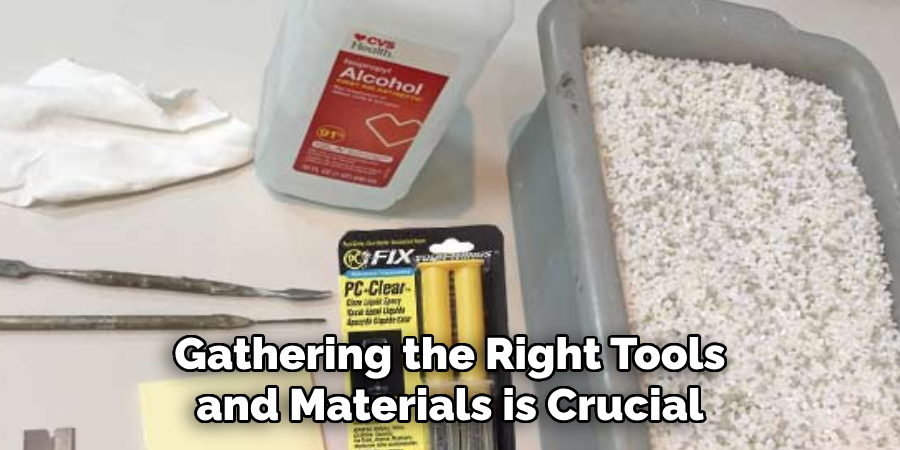
Having these tools and materials readily available will ensure a smoother and more efficient repair process, allowing you to focus on restoring your ceramic ornament with care and precision.
10 Methods on How to Fix a Broken Ceramic Ornament
1. Assess the Damage
Before you begin any repair work, it’s crucial to assess the extent of the damage. Is your ceramic ornament shattered into several pieces, or is it just a minor chip? Understanding the scope of the damage will help you determine the best course of action. Remember, the more detailed your assessment, the easier it will be to choose the right repair method.
2. Gather the Pieces
To properly fix your ornament, you’ll need all the broken pieces. Lay them out on a flat surface and ensure you have every fragment. If a piece is missing, try to find a substitute that can fit into its place. If you can’t, consider using a filler material to simulate the missing section.
3. Super Glue
One of the easiest ways to reattach broken ceramic pieces is with super glue. It’s fast-drying and forms a strong bond. Apply a thin layer to the broken edges and press them together firmly for about 30 seconds. Make sure to align the pieces correctly as the glue sets quickly and doesn’t allow for repositioning.
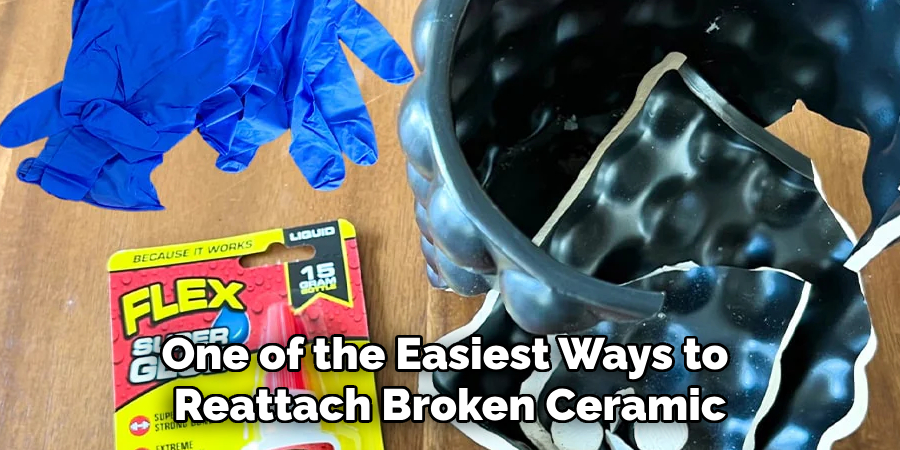
4. Epoxy Adhesive
For heavier or larger pieces, epoxy adhesive is a great option. This two-part adhesive forms a durable bond, making it perfect for more significant damages. Mix equal parts of the resin and hardener, apply to each side of the break, then press together. Allow the epoxy to cure according to the manufacturer’s instructions, usually around 24 hours.
5. Clear Nail Polish
For superficial cracks or chips, clear nail polish can serve as a temporary fix. It works well for sealing small cracks and adds a glossy finish. Brush a light coat over the crack and allow it to dry thoroughly. While not a long-term solution, it can prevent further damage until you perform a more permanent repair.
6. Baking Soda and Super Glue Mixture
For added filling power, mix baking soda with super glue. The baking soda acts as a filler, making the joint stronger and more resilient. Apply the mixture to the broken edges and press firmly together. Once dried, sand down any excess to achieve a smooth finish.
7. Clay or Putty for Missing Pieces
If part of your ceramic ornament is missing, moldable clay or putty can fill in the gaps. Shape it to match the missing piece, attach it with adhesive, and allow it to dry. Once set, paint it to match the rest of the ornament.
8. Use a Clamp
For more intricate ornaments, a clamp can help hold pieces together while the adhesive sets. Be sure to pad the clamp to avoid damaging the surface of your ceramic. This method is especially useful for ornaments with narrow or tapered shapes.
9. Sanding and Painting
Once your ornament is fixed, you might notice uneven surfaces or minor blemishes. Lightly sand these areas with fine-grit sandpaper to smooth them out. Touch up the paint with a matching color to restore the ornament’s original appearance. A thin coat of varnish can help blend the repair seamlessly.
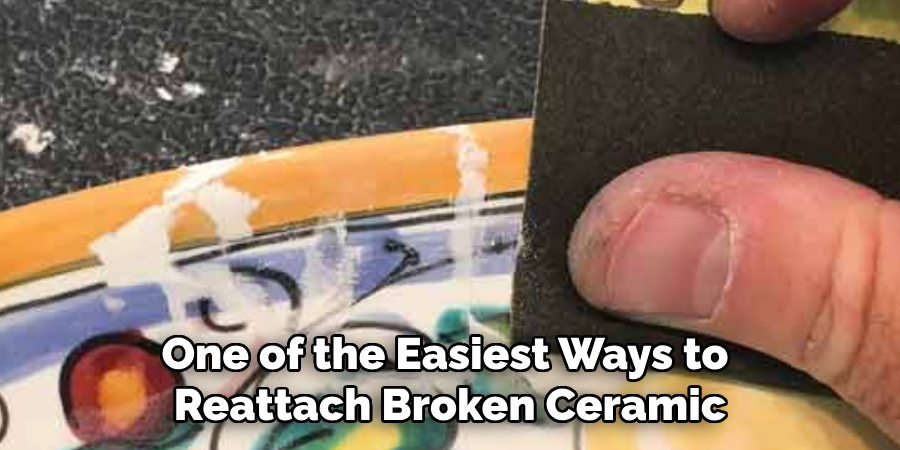
10. Professional Restoration
If all else fails, or if your ornament holds significant sentimental or monetary value, consider professional restoration. Experts in ceramic repair can address even the most intricate damages, ensuring your ornament is as good as new.
Maintenance and Upkeep
Once your ceramic ornament is repaired, proper maintenance and upkeep are essential to ensure its longevity and prevent future breakages. Start by choosing a suitable display space; avoid areas with extreme temperature fluctuations or high humidity, as these conditions can stress the ceramic material. Regularly dust the ornament with a soft, dry cloth to maintain its appearance and prevent the build-up of dirt and grime.
If cleaning is necessary, use a gentle, non-abrasive detergent diluted in water and a soft sponge to avoid scratching the surface. Always handle the ornament with care, using both hands to provide adequate support, especially when moving it. If the ornament is displayed outdoors, consider applying a protective sealant to shield it from environmental damage, but ensure the sealant is appropriate for ceramics.
Common Mistakes to Avoid
When repairing a broken ceramic ornament, it’s essential to avoid common mistakes that can lead to further damage or an unsatisfactory repair. Here are some pitfalls to be mindful of:
- Rushing the Process: Patience is crucial. Allow adhesives and fillers adequate time to set properly. Rushing can weaken the bond and result in fragile repairs.
- Using the Wrong Adhesive: Not all glues are suitable for ceramics. Always select the appropriate adhesive for the size and type of damage. For example, avoid using super glue on heavy pieces that require more robust support from epoxy adhesive.
- Skipping Surface Preparation: Failing to clean and dry surfaces before applying adhesive can prevent proper bonding. Ensure all pieces are free from dust, oil, and moisture.
- Inaccurate Alignment: Misaligned pieces can create noticeable repair lines and imperfections. Double-check alignment before pressing pieces together to ensure a seamless fit.
- Applying Excessive Adhesive: Using too much adhesive can cause it to seep out and leave unsightly marks. Apply just enough to cover the broken edges without overflowing.
Conclusion
Repairing a broken ceramic ornament can be a rewarding endeavor, both in terms of restoring cherished items and honing one’s skill for delicate craftsmanship. With the right tools, techniques, and patience, even a severely damaged piece can be brought back to life with renewed beauty. Thanks for reading, and we hope this has given you some inspiration on how to fix a broken ceramic ornament!
Specialization:
- Master of wheel-throwing, hand-building, and advanced glazing techniques
- Focus on creating both functional pottery and decorative art pieces
Recognition:
- Celebrated by collectors and art enthusiasts for creating one-of-a-kind pieces that blend artistry with functionality
- Participates in local and national exhibitions, earning accolades for his innovative designs and craftsmanship
Passion:
- Deeply committed to exploring and pushing the boundaries of ceramic artistry
- Continuously experiments with new materials, firing techniques, and artistic concepts to evolve his craft
Personal Philosophy:
- Believes in the transformative power of art, aiming to evoke emotions and connections through his ceramic creations
- Advocates for sustainability in ceramics, using eco-friendly materials and practices whenever possible


